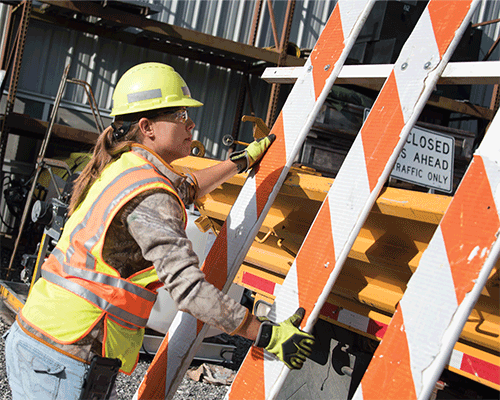Do women feel safe at work?
“It really comes down to the company’s culture”

Page 2 of 2
What can leaders do?
Leslie B. Hammer is the co-director of the Oregon Healthy Workforce Center – a NIOSH-funded Total Worker Health Center of Excellence – and a professor at the Oregon Institute of Occupational Health Sciences at Oregon Health and Science University.
In an October post on NIOSH’s Science Blog, Hammer and three of her colleagues discuss a trio of web-based TWH training programs that promote supportive leadership behaviors that can enhance employee health and well-being while driving organizational improvements.
They note that job stressors such as interpersonal conflict, lack of supervisor support, low job control, task overload and work-family imbalance can have an adverse effect on workers’ health as well as their ability to function on and off the job. For women, additional job stress is common.
“Women tend to have additional stressors related to the types of work they’re engaging in,” Hammer said, referring to those in industries in which women are underrepresented. “Women also have stressors related to sexual harassment moreso than men. Women are also typically experiencing higher levels of work-life stress.
“Because women are the ones to bear children, they are also the ones to experience stress due to various types of pregnancy discrimination at work.”
This can include, in some cases, pregnant workers being denied opportunities or having to accept a different role. After the birth of a child, caregiving becomes a major factor. For some women, they’re managing the care of children and aging parents, along with work, which can lead to safety and health concerns.

Photos: Missouri Department of Transportation Flickr
“The stress that people experience in trying to manage work and non-work does spill over and does impact safety,” Hammer said. “It impacts safety behaviors. It impacts safety compliance. It impacts the ability to focus on the job because people get caught up in their non-work stress.”
OHWC has developed multiple one-hour online training courses for leaders with the aim of improving outcomes for workers, thus reducing job stress.
“Employees who view their supervisors, organization or both as being supportive of family priorities report experiencing significantly less work-family conflict, greater job satisfaction and increased organizational commitment,” Hammer and her co-authors write.
One of the training courses, known as the Safety & Health Improvement Program, is aimed at teaching supervisors how to provide emotional and instrumental support for safety communication and work-life balance challenges. Hammer says supervisors and managers can serve as “linking pins” to improve worker safety, health and well-being.
For more information on the program, visit yourworkpath.com/ship.
Where can workers turn?
When they experience safety and health issues on the job, female employees should seek out a supportive leader. “We always advise women to talk to their employer, talk to their supervisor or their union representative,” Randall said.
Of course, that’s not always as easy as it sounds.
“It really comes down to the company’s culture,” she said. “Is it a worker-friendly environment where a woman can feel free and safe to come forward and report her concerns?”
After such concerns are reported, the next step is paramount for employers and managers. “It’s not just that the person feels confident to speak up,” Kagerer said, “but then what happens when they do? Positions of authority must respond. There has to be a path and a mechanism to respond to those concerns. When concerns are not immediately addressed, the intended culture of an organization begins to unravel.”
Post a comment to this article
Safety+Health welcomes comments that promote respectful dialogue. Please stay on topic. Comments that contain personal attacks, profanity or abusive language – or those aggressively promoting products or services – will be removed. We reserve the right to determine which comments violate our comment policy. (Anonymous comments are welcome; merely skip the “name” field in the comment box. An email address is required but will not be included with your comment.)

